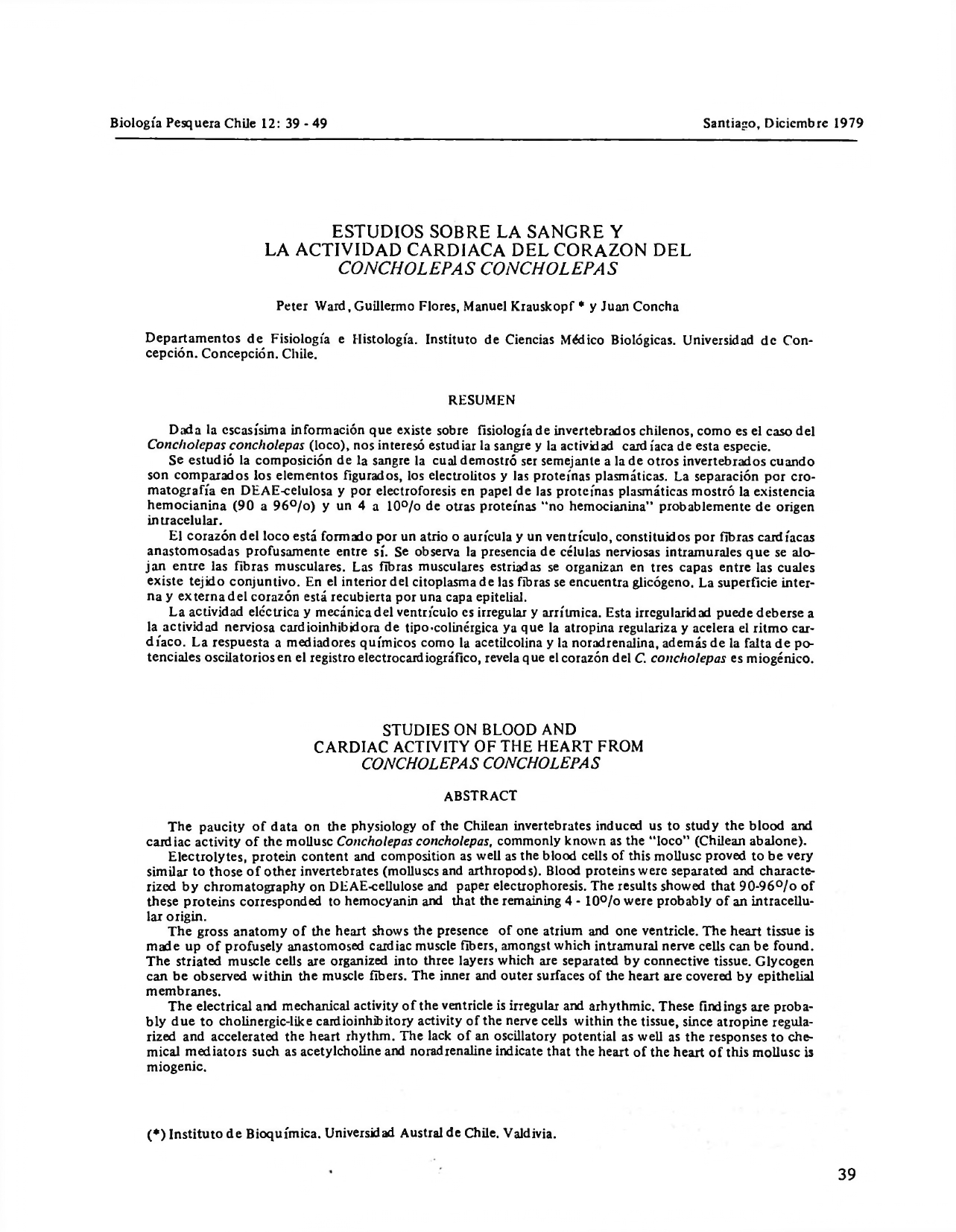Estudios sobre la sangre y la actividad cardiaca del corazón del Concholepas concholepas
DOI:
https://doi.org/10.21703/0067-8767.1979.12.2462Resumen
Dada la escasísima información que existe sobre fisiología de invertebrados chilenos, como es el caso del Concholepas concholepas (loco), nos interesó estudiar la sangre y la actividad card íaca de esta especie. Se estudió la composición de la sangre la cual demostró ser semejante a la de otros invertebrados cuando son comparados los elementos figurados, los electrolitos y las proteínas plasmáticas. La separación por cromatografía en DEAE-celulosa y por electroforesis en papel de las proteínas plasmáticas mostró la existencia hemocianina (90 a 96°/o) y un 4 a 10°/o de otras proteínas “no hemocianina” probablemente de origen
intracelular.
El corazón del loco está formado por un atrio o aurícula y un ventrículo, constituidos por fibras cardíacas anastomosadas profusamente entre sí. Se observa la presencia de células nerviosas intramurales que se alojan entre las fibras musculares. Las fibras musculares estriadas se organizan en tres capas entre las cuales existe tejido conjuntivo. En el interior del citoplasma de las fibras se encuentra glicógeno. La superficie interna y externa del corazón está recubierta poruña capa epitelial.
La actividad eléctrica y mecánicadel ventrículo es irregular y arrítmica. Esta irregularidad puede deberse a la actividad nerviosa cardioinhibidora de tipo-colinérgica ya que la atropina regulariza y acelera el ritmo cardíaco. La respuesta a mediadores químicos como la acetilcolina y la noradrenalina, además de la falta de potenciales oscilatorios en el registro electrocardiográfico, revela que el corazón del C. concholepas es miogénico.




